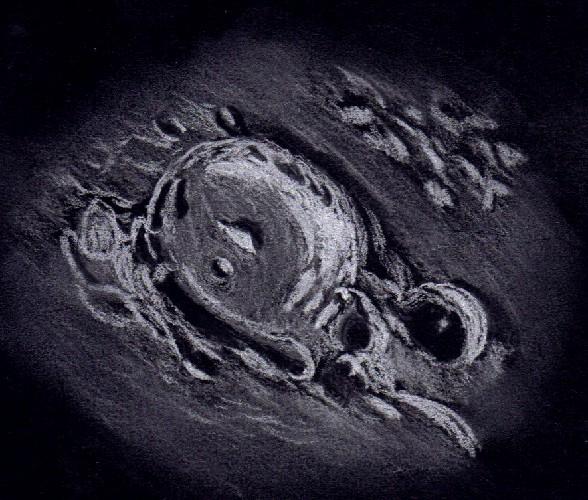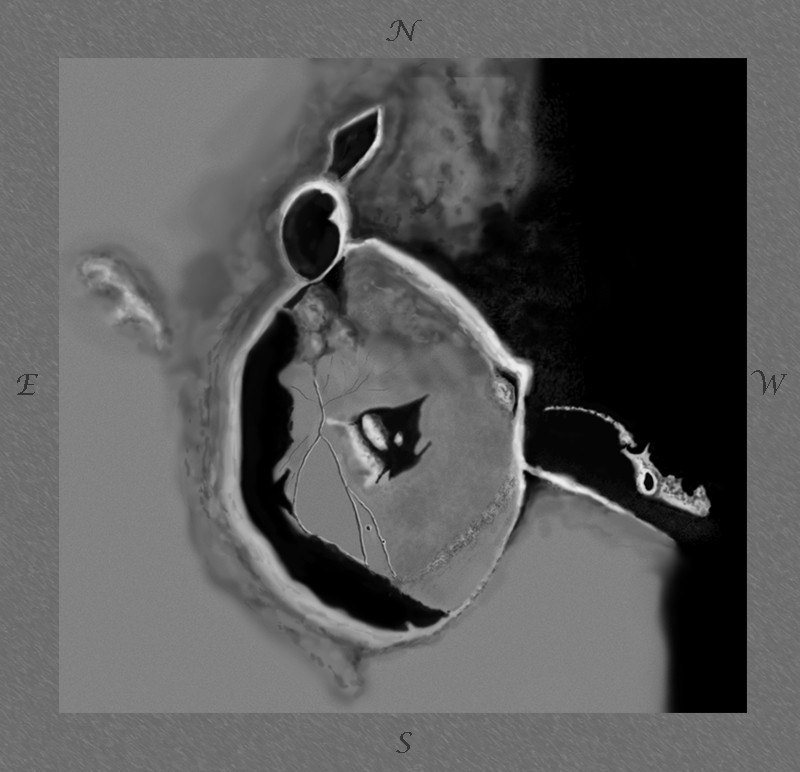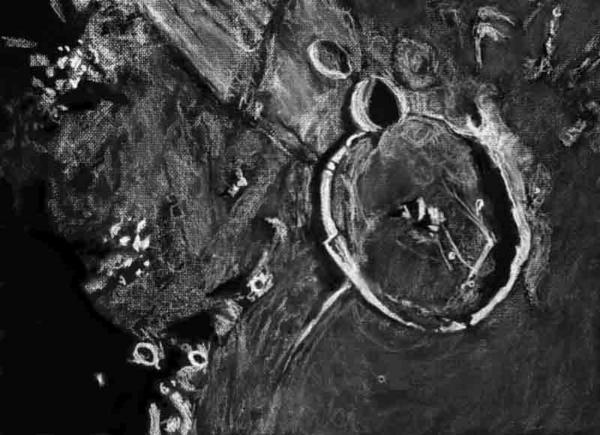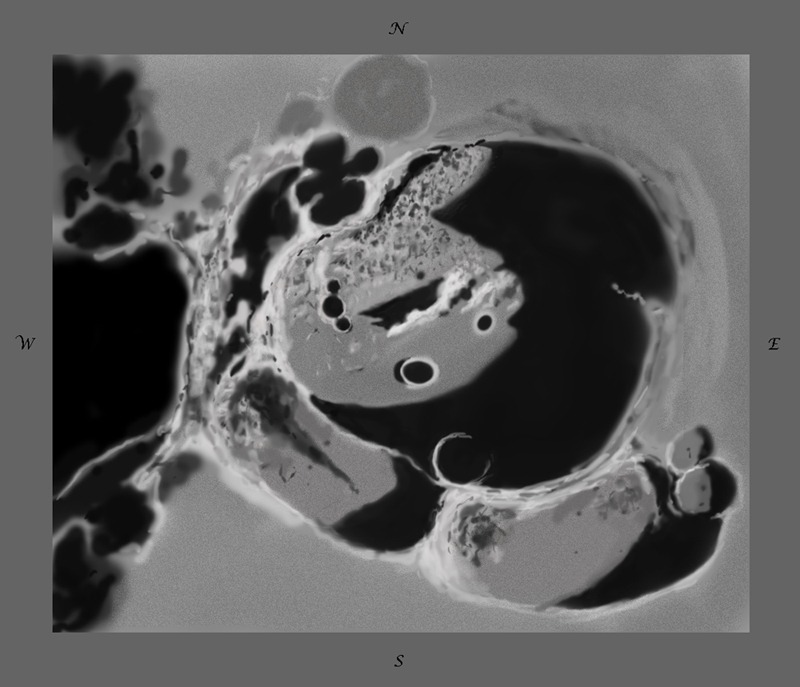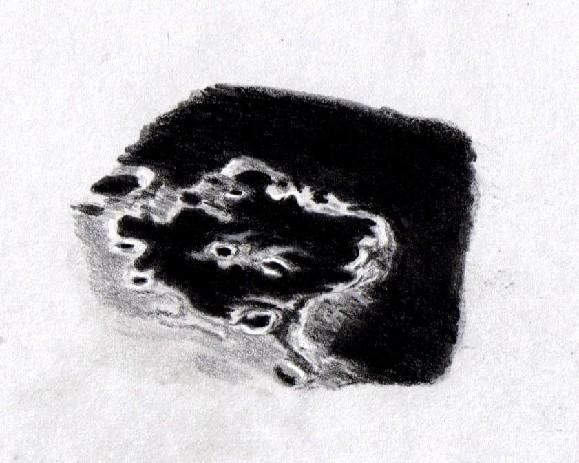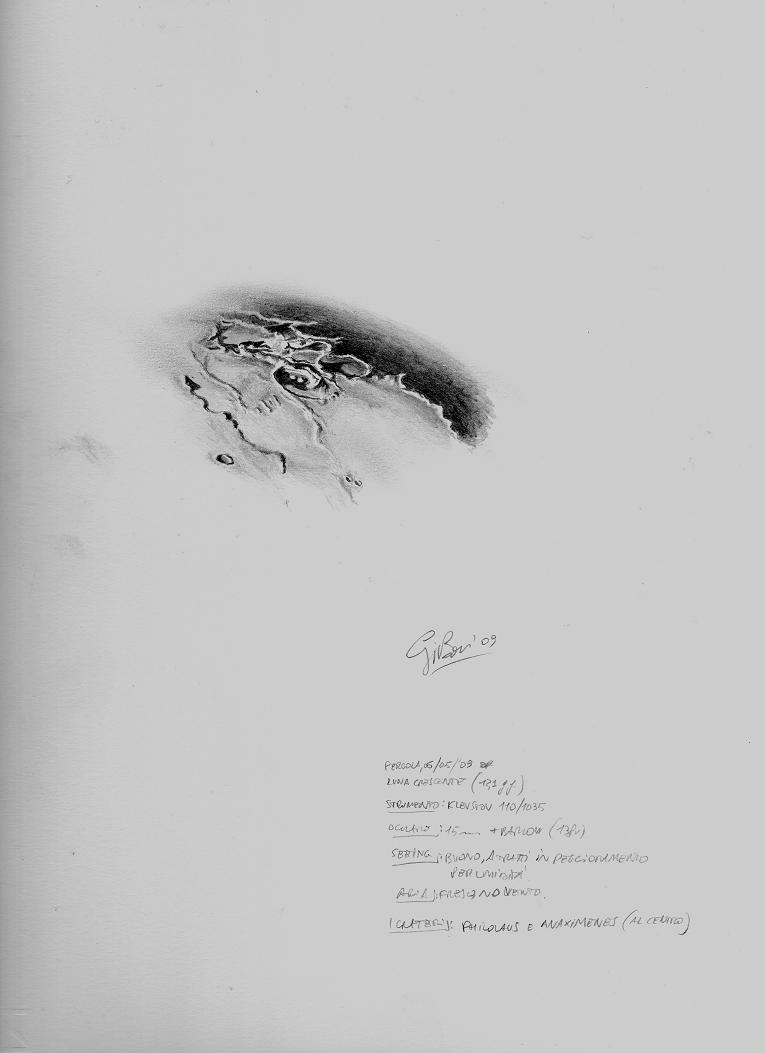
Lunar craters Philolaus and Anaximenes
Sketch and Details by Giorgio Bonacorsi
Hello Astronomy Sketchers,all o.k.?
After bad weather i decide to observe and drawing the Moon.The vision is partially clear,humidity and clouds cover the sky and made a sketch was very difficult.But yesterday,the sky was clear and i take my little Vixen vmc 110 klevstov .I observe the north zone and decide to drawing two beautyfull craters:Philolaus and Anaximenes.The execution, at the end, was complicated by the passage of light clouds and humidity.I hope like you .
Clear sky and good sketch for all.
Ciao,Giorgio Bonacorsi.
Site:Pergola,Marche Region,Center Italy.
Date:5-6 of May 2009
Moon phase:Crescent (12,1 days)
Instrument:Klevstov Vixen vmc 110
Eyepiece: 15mm + Barlow (138x)
Seeing:Good, clouds and humidity at the end.
Temperature:Fresh,no wind.


